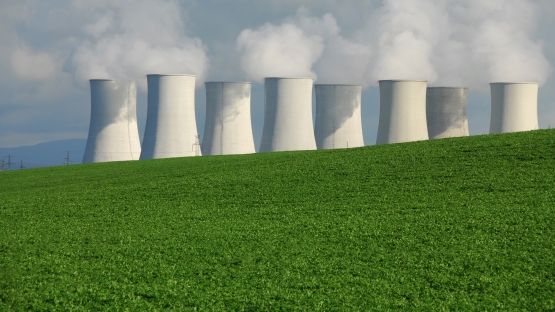Throughout the world, nuclear technology is used in medicine, industry, agriculture and environmental research to help save lives, provide energy, boost productivity, increase food output and protect oceans and fresh water reserves. Yet to ensure a sustainable future for all, it is vital to ensure that means are established for dealing with the restoration legacy from the activities from which this generation has benefited and that unreasonable burdens are not passed on to future generations.
Decommissioning, the removal of nuclear and other radiological facilities, is an essential step in accomplishing that. It enables the safe reuse of a site, as well as any buildings or parts of the facility, for other nuclear, industrial or general purposes, ensuring the protection of people and the environment.
Currently, there are numerous nuclear facilities around the world that have outlived their usefulness and are being decommissioned.
Decommissioning a nuclear facility involves dismantling the buildings and all the associated equipment, properly disposing of any radioactive material, and finally, in a step that is referred to as remediation, ensuring that the land on which the nuclear facility sat, as well as the surrounding area, is once again fit for use by human beings and animals.
Even though there are many technical, practical and economic reasons for decommissioning nuclear facilities, the most compelling reason is ethical responsibility.
"Our generation has benefited tremendously from the use of these nuclear facilities. And I think it's only fair to remove this legacy by completing the dismantling of disused facilities and not to pass on this burden to future generations," says Irena Mele, Head of the IAEA's Waste Technology Section. Watch the complete video interview here.
Like the construction and operation of a nuclear installation, decommissioning is complex work that requires a great deal of expertise. It can sometimes seem like an all-too daunting task.
Challenging Tasks
According to Balthasar Lindauer, Deputy Director at the European Bank for Reconstruction and Development, "The challenges countries face include lack of funding, inadequate regulatory infrastructure and insufficient planning beforehand."
Russia is one of approximately 15 countries with plans to decommission at least one nuclear power plant in the next decade.
Evgeny Kudryavtsev, until recently Head of the Project Office for Spent Fuel Management and Nuclear Facilities Decommissioning at ROSATOM State Nuclear Energy Corporation, outlined some of Russia's primary problems. "There are shut-down and operating facilities with common infrastructure at the same site, which makes implementation of decommissioning projects quite difficult. The radioactive materials that are collected during decommissioning, as well as legacy radioactive waste stored at inoperative sites, need to be safely managed. Currently, disposal and storage space for these materials is limited," he says.
But IAEA Member States don't have to go it alone.
Sharing Burdens
"A major role of the Agency is to develop guides and safety standards relating to decommissioning projects," says Pil-Soo Hahn, Director of the IAEA Division of Radiation, Transport and Waste Safety. "We can assist Member States in building up their national regulatory infrastructure.
"We also organise peer review missions, expert visits and training for their workers. And in this way we can share with the Member States the best practices, experiences and lessons learned from previous international decommissioning projects." Watch the complete video interview here.
The IAEA also promotes networks like the International Decommissioning Network (IDN) which allow countries in different stages of the decommissioning process to consult with and learn from each other, for example through working together on projects of common interest. The Agency also organises hands-on training courses, expert missions where countries are advised on the best way to go about a particular project, scientific visits to sites where projects are underway, and helps countries prepare decommissioning plans, policies and strategies. Since August 2011 , training events for decommissioning, hosted by local organisations, were held in Canada, France, Germany, the Russian Federation, Slovakia, South Africa, Spain, and the United States.
For example, in October 2011 the IAEA conducted a training exercise in Slovakia for workers from nuclear power plants, waste management facilities, and research reactors in nine European countries. The countries that participated were Bulgaria, Georgia, Greece, Hungary, Lithuania, Russia, Serbia, Slovenia and Ukraine. The participants were able to see and learn about the decommissioning of small nuclear facilities at Jaslovske Bohunice in Slovakia. Watch video.
Every country that needs to decommission nuclear facilities faces a different set of problems. One of the IAEA's roles is to be a clearinghouse for solutions to problems like these.
"And we are always ready to adjust any of our assistance programmes to suit the specific needs of our Member countries," says Mele.


